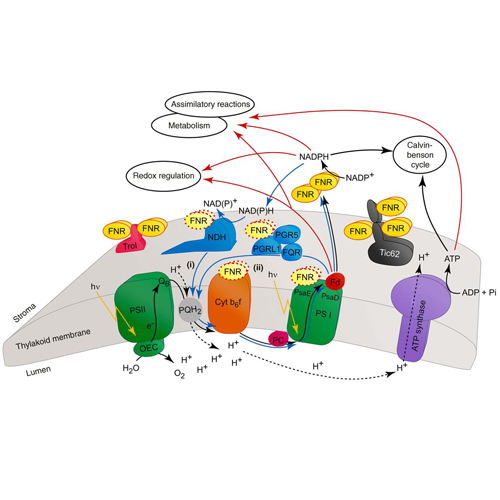A new concept for ferredoxin–NADP(H) oxidoreductase binding to plant thylakoids
18-Aug-2010
Trends in Plant Science, 2010, doi:10.1016/j.tplants.2010.08.008, Volume 15, Issue 11, Pages 608-613 published on 18.08.2010
Trends in Plant Science, online article
Trends in Plant Science, online article
During the evolution of photosynthesis, regulatory circuits were established that allow the precise coupling of light-driven electron transfer chains with downstream processes such as carbon fixation. The ferredoxin (Fd):ferredoxin–NADP+ oxidoreductase (FNR) couple is an important mediator for these processes because it provides the transition from exclusively membrane-bound light reactions to the mostly stromal metabolic pathways. Recent progress has allowed us to revisit how FNR is bound to thylakoids and to revaluate the current view that only membrane-bound FNR is active in photosynthetic reactions. We argue that the vast majority of thylakoid-bound FNR of higher plants is not necessary for photosynthesis. We furthermore propose that the correct distribution of FNR between stroma and thylakoids is used to efficiently regulate Fd-dependent electron partitioning in the chloroplast.











